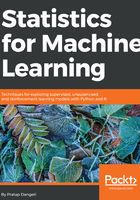
Logistic regression – introduction and advantages
Logistic regression applies maximum likelihood estimation after transforming the dependent variable into a logit variable (natural log of the odds of the dependent variable occurring or not) with respect to independent variables. In this way, logistic regression estimates the probability of a certain event occurring. In the following equation, log of odds changes linearly as a function of explanatory variables:
One can simply ask, why odds, log(odds) and not probability? In fact, this is interviewers favorite question in analytics interviews.
The reason is as follows:

By converting probability to log(odds), we have expanded the range from [0, 1] to [- ∞, +∞ ]. By fitting model on probability we will encounter a restricted range problem, and also by applying log transformation, we cover-up the non-linearity involved and we can just fit with a linear combination of variables.
One more question one ask is what will happen if someone fit the linear regression on a 0-1 problem rather than on logistic regression?
A brief explanation is provided with the following image:
- Error terms will tend to be large at the middle values of X (independent variable) and small at the extreme values, which is the violation of linear regression assumptions that errors should have zero mean and should be normally distributed
- Generates nonsensical predictions of greater than 1 and less than 0 at end values of X
- The ordinary least squares (OLS) estimates are inefficient and standard errors are biased
- High error variance in the middle values of X and low variance at ends
All the preceding issues are solved by using logistic regression.
